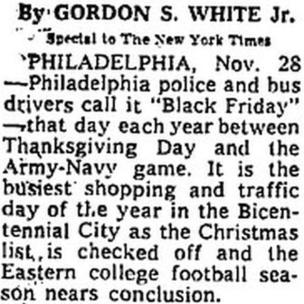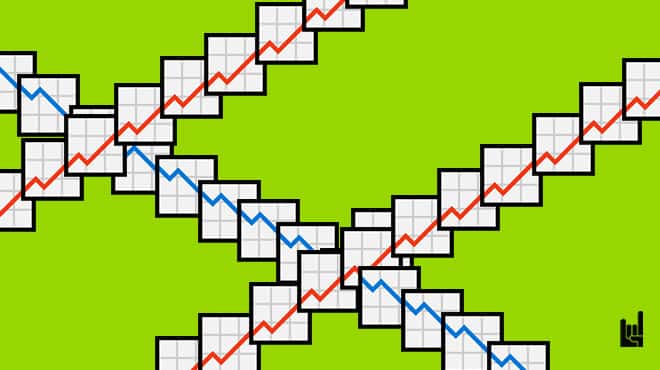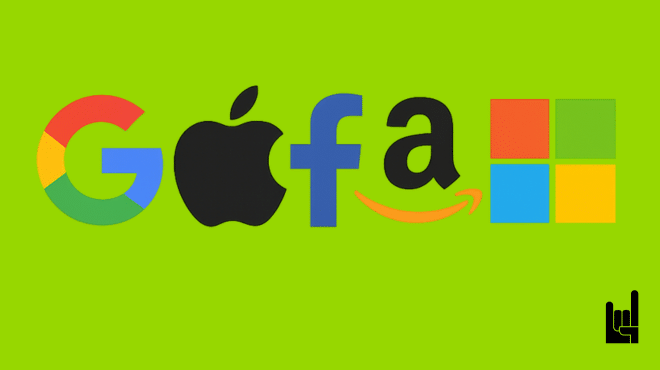But how did Black Friday become what it is today?
Why is it called ‘Black’ Friday?
When did it turn into a shopping frenzy?
And why is it always on a Friday?
Here’s a brief history of Black Friday, starting with some fundamental questions.
Why is Black Friday on a Friday?
To begin with, Black Friday is the day following Thanksgiving.
Therefore, to answer why Black Friday is on a Friday, we should first explain why Thanksgiving is on a Thursday.
Thanksgiving began in the early 17th century. It is a day devoted to giving thanks for the blessing of the harvest and the preceding year.

However, prayers and ceremonies as a public religious demonstration of piety had difficulty becoming a national holiday in the USA. We shouldn’t forget that the USA is a country based in part on the separation of church and state. As such, Thomas Jefferson believed that Thanksgiving shouldn’t be given a “national holiday” status. As a result, the celebration date of Thanksgiving ended up being different from state to state.
The nationalization of the holiday didn’t come until A. Lincoln’s era, in 1863. Influenced by the 40-year campaigning of author Sarah Josepha Hale, President Lincoln made a proclamation marking Thursday, November 26, 1863, as Thanksgiving. He called upon his countrymen to “set apart and observe the last Thursday of November next, as a day of Thanksgiving and Praise”.
Our Black Friday history continues two centuries later, in 1939, at the tail-end of the Great Depression. It was when President F.D. Roosevelt tried to ‘time’ Thanksgiving. You see, Roosevelt was looking for ways to boost the economy by extending the holiday shopping period. So, he considered moving Thanksgiving to the third Thursday of November instead of the fourth, to extend the holiday shopping season by an extra week.

And he did.
The Thanksgiving date changed for purely economic reasons. Nevertheless, his proclamation proved to be quite unpopular. Two years later, the president and Congress established Thanksgiving as a United States federal holiday to be celebrated on the fourth Thursday in November.
Why is Black Friday ‘Black’?
Unlike in the case of Black Friday, the word ‘black’ before any day has a long tradition of describing a highly unpleasant or turbulent event in history.
Black Monday refers to Monday, October 19, 1987. It was when the markets of Europe crashed, echoing the crash of Hong Kong’s stock market, and finally hitting the US economy.
Black Tuesday happened on October 29, 1929, during the first days of the Wall Street Crash. Due to panic, about 16 million shares were traded that date—an unbreakable record for the next 40 years.
Black Wednesday took place on September 16, 1992. It was when a collapse in the pound sterling forced Britain to withdraw from the European Exchange Rate Mechanism (ERM).
Black Thursday, October 24, 1929, marked the beginning of The Great Depression. It started when the market lost 11 percent of its value. The rest is history.
Black Friday, September 24, 1869. 1869. On that day, Jay Gould a railroad developer (and a speculator), and James Fisk, a stockbroker (also a speculator) created a boom-and-bust in gold prices. The price of gold fell by 20 percent, and the stock market crashed. As a result, commodity prices dropped by 50 percent.

Black Saturday happened on February 7, 2009, in Australia. A series of bushfires ignited or were burning across the Australian state of Victoria. Up to this day, it’s Australia’s all-time worst bushfire disaster.
Black Sunday occurred on April 14, 1935, and it was one of the worst dust storms in American history. Around 300 thousand tons of topsoil were estimated to be displaced from the prairie region.
‘Black Friday’ Meant Something Bad for a Long Time
The original Black Friday (the one in 1896 with the stock market scandal) was losing its relevance year by year. So the term ‘Black Friday’ didn’t really mean much as time was going by.
So a century later, the term was resurrected to describe a different situation: the post-Thanksgiving period. The city of Philadelphia was responsible for this change. But why?
The streets of Philadelphia, like those of any major U.S. city, were packed with shoppers the day after Thanksgiving. But in Philly, there was another event adding to the crowd: the annual Army-Navy football game.

Dense crowds are great for business owners, but they’re bad news for another profession: police officers. While most people enjoyed the festive days, many officers not only couldn’t take time off but had to work overtime to manage the chaos. As a result, police officers began referring to the post-Thanksgiving rush as “Black Friday” and “Black Saturday,” describing the nightmare they faced during these hectic days.

At the same time, shopkeepers and merchants of Philadelphia attempted to rebrand these “black” days and tried to introduce them as “Big Friday” and “Big Saturday”, as they have a more sales-friendly tone.
However, they never really succeded and the term ‘Black Friday’ is still what we use today.
When Did ‘Black Friday’ Start Meaning Something Not-Bad
It wasn’t until the 1980s that the term “Black Friday” took on a more positive meaning, marking a key turning point in its history.
Before the digital era, bookkeeping and financial records were kept on paper. Negative amounts were marked in red ink, while positive amounts were recorded in black ink. Traditionally, many retailers operated at a loss for most of the year, from January to November. But the holiday season, starting the day after Thanksgiving, was when they finally turned a profit. This shift from being “in the red” to “in the black” symbolized profitability—hence the name “Black Friday.”
Over the years, as Black Friday’s popularity grew, so did the crowds eager to take advantage of the sales.
Up to the early 2000s, back when the big 5 tech companies weren’t that big (and growth hacking agencies like ours didn’t even exist) the biggest shopping day of the year was the Saturday before Christmas, aka Super Saturday.
However, in the early 2000s, Black Friday took the throne of Super Saturday and became the frenzy we know today.
Black Friday History Today – Statistics
According to Salesforce, for Black Friday 2023, global online sales reached $70.9 billion. This reflects an 8% increase from the previous year. In the U.S., online sales alone totaled $16.4 billion, up 9% year-over-year.
With the convenience of online shopping, it’s no surprise that people choose to shop digitally on Black Friday—especially on a day when visiting physical stores feels like navigating through chaos. At the same time, eCommerce stores and eShops equip Black Friday strategies for retailers to gain even more ground.
| Year | Spent per shopper | Total spent (in billion dollars) | Percent increase |
|---|---|---|---|
| 2002 | N/A | $416.40 | 2.1% |
| 2003 | N/A | $437.60 | 5.1% |
| 2004 | N/A | $467.20 | 6.8% |
| 2005 | $734.69 | $496.00 | 6.2% |
| 2006 | $750.70 | $512.10 | 3.2% |
| 2007 | $755.13 | $526.00 | 2.7% |
| 2008 | $694.19 | $501.50 | -4.7% |
| 2009 | $681.83 | $502.67 | 0.2% |
| 2010 | $718.98 | $528.77 | 5.2% |
| 2011 | $740.57 | $553.26 | 4.6% |
| 2012 | $752.24 | $567.65 | 2.6% |
| 2013 | $767.24 | $583.52 | 2.8% |
| 2014 | $802.45 | $611.52 | 4.8% |
| 2015 | $805.65 | $628.17 | 2.7% |
| 2016 | $935.58 | $646.72 | 3.0% |
| 2017 | $967.13 | $679.24 | 5.0% |
| 2018 | $1,007.24 | $691.48 | 1.8% |
| 2019 | $1,047.83 | $718.64 | 3.9% |
| 2020 | $997.79 | $777.35 | 8.2% |
| 2021 | N/A | $886.7 | 14.1% |
Source
Here are a few more handpicked Black Friday stats:
- Sales from independent businesses worldwide: Black Friday and Cyber Monday weekend saw $7.5 billion in sales from independent businesses in 2022, which increased to $9.3 billion in 2023, a year-on-year rise of about 8.5%. This indicates growing consumer support for small businesses during these shopping events. [source]
- Black Friday online sales: In 2023, Black Friday online sales hit a new record of $9.8 billion in the U.S., representing a 7.5% increase from 2022 [source]
- Number of online shoppers on Black Friday: In 2023, 90.6 million U.S. consumers shopped online on Black Friday, up from 87.2 million in 2022 [source]
Conclusion
Initially coined by Philadelphia police to describe the overwhelming crowds and traffic after Thanksgiving, it was redefined in the 1980s to represent the moment retailers transitioned from losses (“in the red”) to profits (“in the black”). Today, Black Friday is synonymous with massive sales and consumer excitement, both online and in stores.
From a term of chaos and frustration to a symbol of profitability and shopping frenzy—such is the history of Black Friday.
Was this article useful?

I write for GrowthRocks, one of the top growth hacking agencies. For some mysterious reason, I write on the internet yet I’m not a vegan, I don’t do yoga and I don’t drink smoothies.




2 Responses
Good post. Informative. Relevant. And I will steal large portions of it at the table next Thursday in order to expand my reputation for erudition.
Thanks a lot, George. Spread the knowledge!